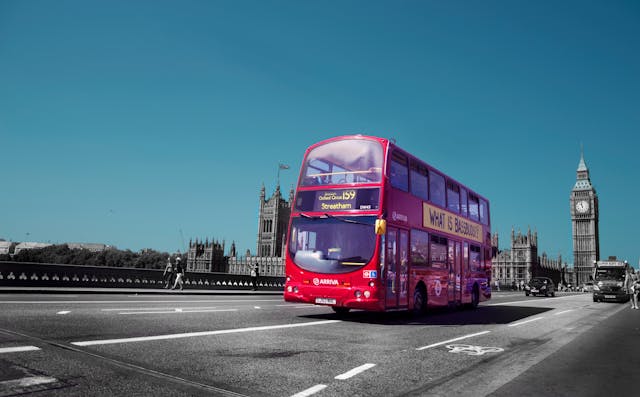
When were buses invented? The first bus was released in Paris in 1662, but it was obviously horse-drawn.
These days, most cities in the world have a regular bus line with bus stops dotted all over the place. You can jump on any bus, pay the fare, and away you go. This wasn’t always the case and it took the first bus in 1662 to change the way that people thought. The very first bus line in the world was rather surprisingly created by Blaise Pascal in 1662. You may have heard of Pascal, but not because of his workings with bus lines. Pascal was a French mathematician, physicist, inventor, and philosopher. You will have heard of him because of the first calculator, called the Pascaline, because of his philosophical work, called Pascal’s wager, and because Pascal is the name given to a unit of pressure.
While Pascal was doing all of the other work he is famous for, he came up with the idea for a bus line. He called it carrosses à cinq sols, which means the five-sol coaches. The sol was a coin that latter became called the sou, so the system was a coach that cost 5 sol. He came up with the idea because the population of Paris was increasing rapidly and there was no system of public transport. People either used their own vehicles or ordered a carriage to come and pick the up. Pascal had the idea of a system of carriages that would always make the same journeys and always leave at the same times. People could get on them anywhere without having to book in advance and get off anywhere along the route. He started the system with five routes and it was very popular with regular people, but not so popular with the wealthy. They didn’t like the idea of travelling with regular people so the rules were changed to ban soldiers, pages, and many other types of people from riding in the carriages. The price was also increased t six sols as well so that the aristocracy could travel in peace. The service didn’t last long.
There was a long gap and then similar systems were introduced again in France and Britain in the 1820s. The Industrial Revolution was in full swing and people were flocking to the cities. A cheap and convenient form of public transport was necessary and a few people rose to meet the demand. Large carriages with up to 16 seats were pulled by a couple of horses and people could get on and off anywhere along the route. The system in France was invented by Stanislas Baudry and he is also credited with coming up with the name “bus”. Everyone seems certain that he came up with the word, although the reason behind it could possibly be legend. He was a corn mill owner and his corn mill produced lots of hot water, which he tunred into a spa. He then created a carriage service from the center of Nantes, and town in France, to his spa. The bus went past a hat shop owned by a Mr. Omnes that was called Omnes Omnibus. His spa wasn’t successful and he put all of his money into the carriage business. He took the word “omnibus” (for all) off the sign and starting using it for his service. That was shortened over time to bus.
These bus services were popular, but the time of the horse was limited. By the early 19th century a steam-powered omnibus service started in Britain. They were much safer and cheaper than horse-drawn carriages and they were faster as well. They became very popular. Unfortunately, they were forced to pay high tolls to use the roads, which drove their prices up and meant that only horse-drawn buses remained for a long time. In 1881, an electric bus that ran along a power line was invented in Germany. It was only an experiment and didn’t last long. A similar system was started in 1901 in Dresden and this grew into what we know as a trolleybus or a tram.
The first motorized bus was invented in 1895 in Germany and it could carry six passengers. It ran on a Benz engine. As engines became more powerful, the number of people the buses could carry started to increase. Within 3 years, 20-seater buses that could travel at 18 km/h were on the streets. By the 1910s, people can see how useful buses are and they start to increase dramatically. And this is what I learned today.
Photo by Caio : https://www.pexels.com/photo/red-double-deck-bus-on-road-45923/
Sources
https://www.britannica.com/technology/bus-vehicle
https://en.wikipedia.org/wiki/Bus
https://artsandculture.google.com/story/a-brief-history-of-buses/vQVBCgQMbTStvg?hl=en
https://fr.wikipedia.org/wiki/Stanislas_Baudry
https://en.wikipedia.org/wiki/Horsebus

Pingback: When did we start using taxis?